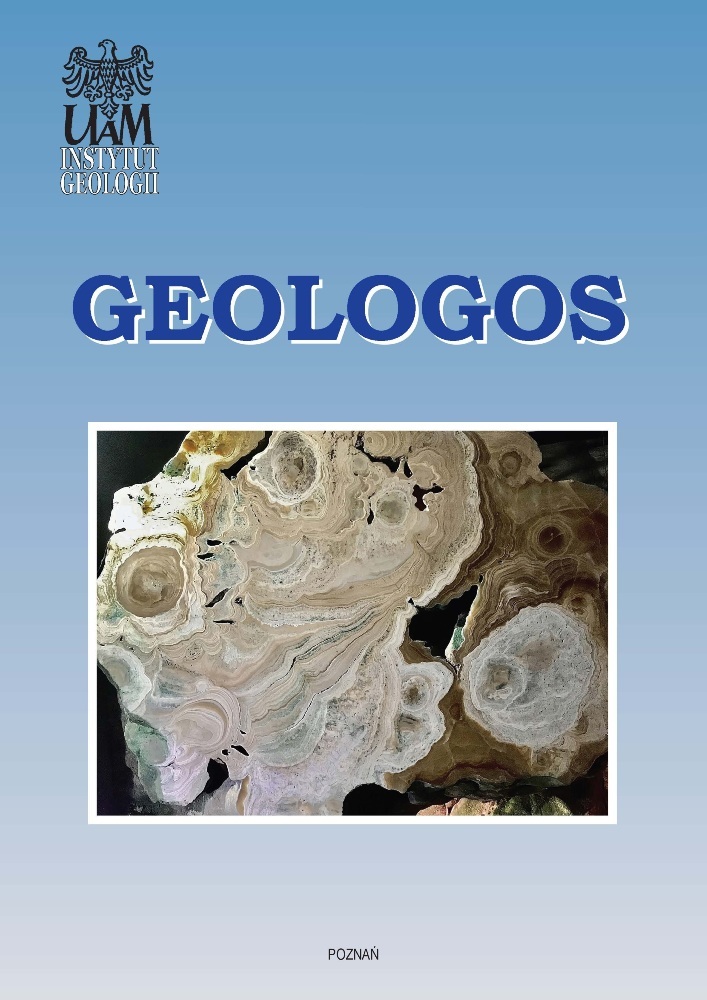Abstract
The Palaeoproterozoic succession of the Singhbhum craton in E. India was hitherto considered as almost entirely siliciclastic and partly volcanogenic. Here we describe, from the fine-grained, tidally influenced shale facies of the Palaeoproterozoic Chaibasa Formation (2.1-1.6 Ga), a fine, originally more or less horizontal, wavy to strongly undulating (later locally deformed) lamination. Investigation of these laminae shows that they must be ascribed to the accumulation of fine particles on microbial mats that covered a sandy substrate. The structures must therefore be considered as stromatolites, features that are accepted as proof of the presence of micro-organisms, in this case most probably cyanobacteria. The interpretation of biogenic activity is supported by microscopic analysis. It is the first description of traces left by biogenic activity that took place in the Palaeoproterozoic of the Singhbhum craton.
References
Bhattacharyya, D.S. & Bhattacharya, T.K., 1970. Geological and geophysical investigations of a basaltic layer in Archaean terrain of eastern India. Geological Society of America Bulletin 81, 3073-3078. DOI: https://www.doi.org/10.1130/0016-7606(1970)81[3073:GAGIOA]2.0.CO;2
Bhattacharya, H.N., 1991. A reappraisal of the depositional environment of the Precambrian metasediments around Ghatshila-Galudih, eastern Singhbhum. Journal of the Geological Society of India 37, 47-54.
Bose, P.K., Mazumder, R. & Sarkar, S., 1997. Tidal sandwaves and related storm deposits in the transgressive Protoproterozoic Chaibasa Formation, India. Precambrian Research 84, 63-81. DOI: https://www.doi.org/10.1016/S0301-9268(97)00016-8
Mallik, L., Mazumder, R., Mazumder, B.S., Arima, M. & Chatterjee, P., 2012. Tidal rhythmite in offshore shale: a case study from Paleoproterozoic Chaibasa shale, eastern India and its implications. Marine and Petroleum Geology 30, 43-49. DOI: https://www.doi.org/10.1016/j.marpetgeo.2011.10.005
Mazumder, R., 2004. Implications of lunar orbital periodicities from Chaibasa tidal rhythmite of late Paleoproterozoic age. Geology 32, 841-844. DOI: https://www.doi.org/10.1130/G20424.1
Mazumder, R., 2005. Proterozoic sedimentation and volcanism in the Singhbhum crustal province, India and their implications. Sedimentary Geology 176, 167-193. DOI: https://www.doi.org/10.1016/j.sedgeo.2004.12.011
Mazumder, R. & Sarkar, S. 2004. Sedimentation history of the Palaeoproterozoic Dhanjori Formation, Singhbhum, India and its implications. Precambrian Research 130, 267-287.
Mazumder, R., Van Loon, A.J. & Arima, M., 2006. Soft-sediment deformation structures in the Earth's oldest seismites. Sedimentary Geology 186, 19-26. DOI: https://www.doi.org/10.1016/j.sedgeo.2005.12.002
Mazumder, R., Rodriguez-Lopez, J.A., Arima, M. & Van Loon, A.J., 2009. Palaeoproterozoic seismites (finegrained facies of the Chaibasa Fm., E. India) and their soft-sediment deformation structures. [In:] S.M. Reddy, R. Mazumder, D.A. Evans & A.S. Collins (Eds): Palaeoproterozoic supercontinent and its global evolution. Geological Society of London, Special Publications 323, 301-318. DOI: https://www.doi.org/10.1144/SP323.15
Naha, K., 1965. Metamorphism in relation to stratigraphy, structure and movements in parts of east Singhbhum, Eastern India. Quaternary Journal of the Geological, Mineralogical, Metallurgical Society of India 37, 41-88.
Nelson, D.R., Bhattacharya, H.N., Misra, S., Dasgupta, N. & Altermann, W., 2007. New SHRIMP U-Pb zircon dates from the Singhbhum craton, Jharkhand-Orissa region, India. [In:] S. Banerjee (Ed.): Abstracts International Conference on Precambrian Sedimentation & Tectonics & 2nd GPSS Meeting, Indian Institute of Technology, Bombay, 2009, 47.
Noffke, N., 2010. Geobiology - Microbial mats from the Archeanera to today. Springer-Verlag, Berlin, 194 pp.
Reddy, S.M., Clarke, C. & Mazumder, R., 2009. Temporal constraints on the evolution of the Singhbhum Crustal Province from U-Pb SHRIMP data. [In:] D. Saha & R. Mazumder (Eds.): Paleoproterozoic supercontinentsand global evolution. Abstract volume. International Association for Gondwana Research Conference Series 9, 17-18.
Roy, A., Sarkar, A., Jeyakumar, S., Aggrawal, S.K. & Ebihara, M., 2002a. Sm-Nd age and mantle characteristics of the Dhanjori volcanic rocks, Eastern India. GeochemicalJournal 36, 503-518. DOI: https://www.doi.org/10.2343/geochemj.36.503
Roy, A., Sarkar, A., Jeyakumar, S., Aggrawal, S.K. & Ebihara, M., 2002b. Mid-Proterozoic plume-related thermal event in Eastern Indian craton: evidence from trace elements, REE geochemistry and Sr-Nd isotope systematics of basic-ultrabasic intrusives from Dalma Volcanic Belt. Gondwana Research 5, 133-146. DOI: https://www.doi.org/10.1016/S1342-937X(05)70897-2
Saha, A.K., 1994. Crustal evolution of Singhbhum-North, Orissa, eastern India. Geological Society of India Memoir 27.
Van Loon, A.J., 2009. Soft-sediment deformation structures in siliciclastic sediments: an overview. Geologos 15, 3-55.
License
This content is open access.
